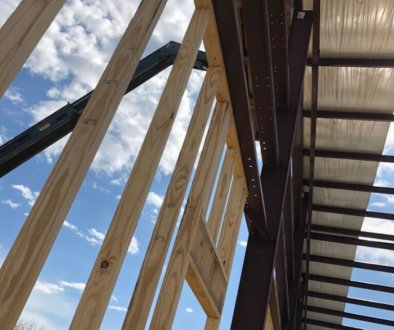
Air quality is a big deal when it comes to the spaces where you spend most of your time. Though most people don’t think about it very often, effective ventilation is one of the biggest determining factors in the air quality of your building.
Homes, offices, retail stores, and commercial buildings all have ventilation systems. They vary depending on the type of space, the purpose of the building, and the local climate, but the function of ventilation systems remains the same: to circulate air throughout the building, moving airborne contaminants out and fresh air in.
The Dangers of Airborne Contaminants in Commercial Spaces
As a landlord, property manager, or business owner, you’re responsible for the health and safety of your employees or tenants when they’re on your property. Commercial spaces are prone to even worse air quality than residential spaces, and many respiratory and health problems can be blamed on workplace environments. Here are some of the problems that arise when air quality is poor in a commercial facility:
- Fumes and odors—Paint or cleaning fumes, fuels, and pesticides are a few of the common indoor fumes. Not only do they smell bad, but they can cause physical discomfort. Breathing fumes can even cause serious health issues over time.
- Mold—Mold is not just gross, but it’s unhealthy to breathe. It releases spores that are suspended throughout the air. The more mold, the more potential for serious health issues to spread throughout your building.
- Germs and Viruses—An unventilated building is a great breeding ground for bacteria and viruses that will cause illness in occupants if left unchecked.
- Dust and dirt—Dirty air isn’t always full of dangerous fumes, mold, or bacteria. Sometimes, it’s simply dust and dirt. All buildings are subject to dust, but manufacturing spaces are among the worst because there are particles of wood, metal, fibers, or other solid matter floating around.
Types of Ventilation Systems
- Natural Ventilation—An example of natural ventilation is simply opening a window or door to let in fresh air. This is commonly used in residences, but many commercial spaces don’t have windows or doors that can be left open, whether for safety or other reasons.
- Mechanical Ventilation—Mechanical ventilation uses a system of vents and requires electricity to power fans that pull in fresh air and distribute it throughout the building.
- Mixed-Mode Ventilation—Many commercial spaces employ a mix of natural and mechanical ventilation to create good airflow. In these cases, windows might be opened on mild days, and mechanical systems are used whenever it’s too hot or cold for natural methods.
The Best Ventilation System: Mechanical Ventilation
We think mechanical ventilation is the best system for most commercial spaces. It’s more reliable than natural ventilation, and it’s possible to keep costs low through proper installation and maintenance. It can be installed in just about any type of facility and works well with common HVAC systems.
Our goal is to provide education on HVAC in Commercial settings. For more information about ventilation in commercial spaces and the best type of ventilation to use in your specific case, contact us today.




